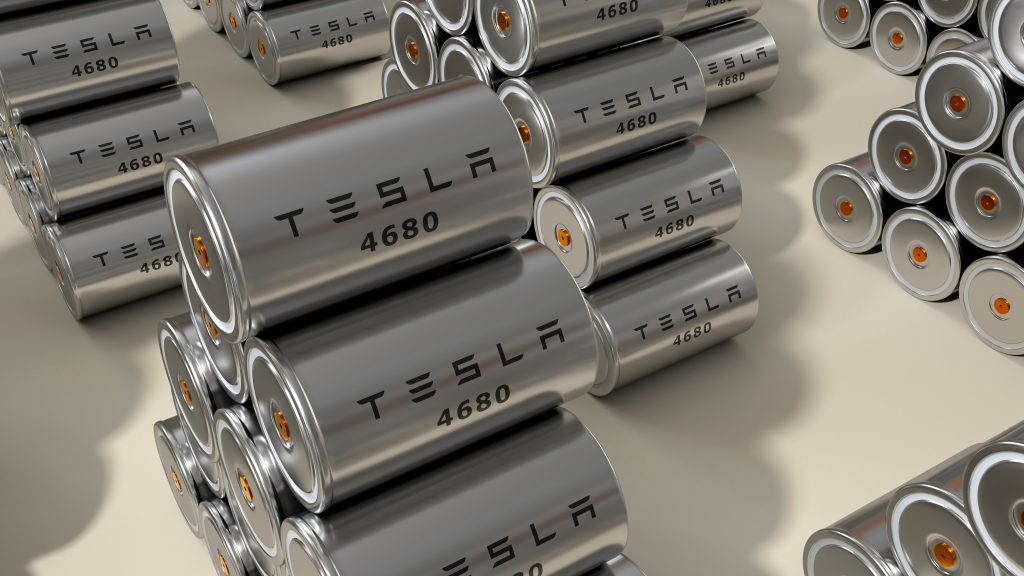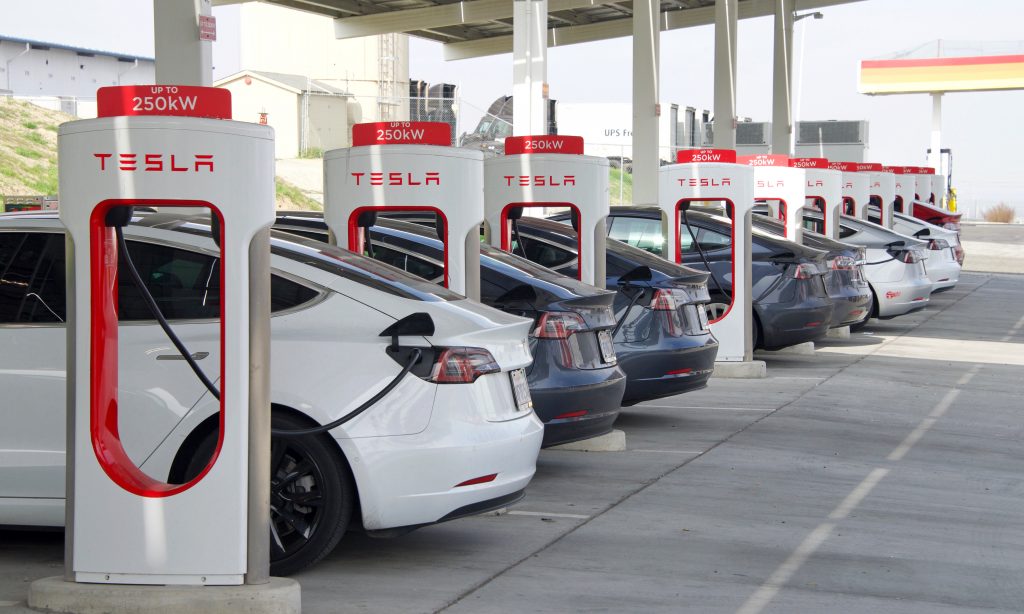Unlike other EV manufacturers, who opt for developing their own large-format battery cells, Tesla decided to equip their cars with small-format batteries that were already being used by various electronic devices. This solution offered many advantages, one of which was the reduction of the risk of battery shortage.
The history of Tesla batteries
All of the traction batteries used by Tesla in their vehicles are lithium-ion batteries. They are, however, not all the same. So far Tesla introduced four types of batteries in their cars – 1865 type battery, 2170 type battery, 4680 type battery, and LFP prismatic battery.
1865 type battery
The 1865 type battery was the first battery ever used by Tesla. It was implemented in Model S and Model X in 2013. The 1865 type battery was highly dense. It allowed for big power output, as well as a range of over 650 kilometers on a single charge. A cathode of 1865 type battery was composed of nickel, cobalt, and aluminum.
2170 type battery
In 2017 Tesla introduced the 2170 type battery. It was fitted in Model 3 and Model Y. Compared to the 1865 type battery, it changed in size and dielectric and as a result could offer more power storage for a much smaller price. Due to the incredibly high cost of cobalt, for the 2170 type battery Tesla changed the chemical composition of its cathode. It allowed the reduction of the amount of cobalt used in battery production by more than 66%. However, it also increased the risk of overheating.
4680 type battery
The 4680 type battery, introduced in 2020 as a successor of type 2170, was designed to reduce the heat released. For this battery Tesla came up with a new shingle-spiral design that drastically reduced the distance voltage traveled from cathode to anodes and allowed storing of 9000mAh of power. The 4680 type battery’s cell was 54% denser, 56% cheaper to manufacture, and cost 69% less to run.

4680 Tesla battery array,
LFP prismatic battery
The LFP prismatic battery, which is a lithium-iron-phosphate battery, was introduced in some of the newer Tesla models. It is less dense than NCA/NCM compositions. LFP prismatic battery offers decent range, while also being much more affordable. It is not, however, a substitution for the 4680 type battery.
How did the battery development affect the performance of Tesla cars?
Despite the public’s expectations, the introduction of new batteries did not increase the range of Tesla cars. Model Y fitted with a 4680 type battery has a range of 440 kilometers on a single charge, which is more than 200 kilometers less than a Model S with 1865 type battery. Introduction of new technologies, however, allowed Tesla to release more affordable models and reach a wider public with their vehicles.

The influence of the Tesla batteries on the environment
Tesla batteries rely on lithium, cobalt, and nickel. Extraction of these minerals is known to be damaging for the environment, not to mention problematic from the ethical point of view, since it leads to habitat destruction, water pollution, and high carbon emissions. To reduce the negative environmental impact of car batteries, Tesla decided to introduce a battery recycling program. It prevents end-of-life batteries, as well as scrap batteries from production to be sent to a landfill. As a result 100% of these batteries are recycled, which allows cutting down on long-term emissions for production.
Tesla battery from a secondary market
Tesla battery can be obtained from a secondary market, which is beneficial not only to the environment, but also to the vehicle’s owner, since it is a far more cost-effective solution. Before buying a used Tesla battery, the buyer needs to make sure it is authentic and compatible with the specific car model. It should also be provided by a reliable supplier.



